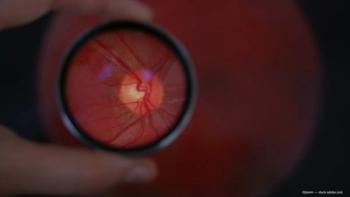
Comparative studies document outstanding results with contemporary custom LASIK
A prospective, randomized, single-site, multi-surgeon study of two platforms for wavefront-guided LASIK for the treatment of myopia underlines the excellent performance of advanced laser technology and ablation algorithms.
Key Points
The latter treatment incorporated iris registration.
"As laser technology has improved and other enhancements have been made to the platforms, there is a need for more sophisticated outcomes assessments," said Dr. McCulley, professor and chairman of ophthalmology, University of Texas Southwestern Medical Center, Dallas. "Methods should include psychophysical and psychometric testing in addition to standard quantitative visual analysis and refractive testing to identify any differences between systems if they exist."
The patients enrolled had low to moderate myopia, and the visual acuity and refractive features of the two groups were comparable preoperatively.
3-month results
At 3 months after surgery, UCVA was 20/20 or better in 94% of the eyes that underwent the CustomCornea procedure and in 84% of the eyes that had undergone the CustomVue procedure, whereas UCVA of 20/15 or better was achieved by 40% of eyes after CustomCornea treatment and in 36% of CustomVue eyes.
"These results are excellent and not significantly different comparing the two groups," Dr. McCulley said. "However, for analyses of vision and refractive outcomes in both study groups with eyes categorized by level of myopia, the eyes with lower myopia tended to fare better than eyes with myopia of –3.0 D or higher."
The predictability of both platforms for correcting low and moderate myopia was good, although Dr. McCulley noted that a previously documented tendency for a slight undercorrection using the AMO platform also was seen in this study when iris registration technology was used.
"We, therefore, encourage surgeons using this system to analyze their results so that they can develop a site-specific nomogram adjustment for any mild undercorrection," he said.
Contrast sensitivity
Contrast sensitivity testing was performed under photopic and scotopic conditions and using dim lighting with glare. Outcomes were analyzed based on evaluation of proportions of eyes in each group with clinically significant improvement or worsening, defined by a change >0.30 log value (approximately two contrast sensitivity levels).
The results showed comparable results with the two platforms in most of the tests, except that significant differences favored the CustomCornea treatment at 6 and 12 cycles per degree in dim lighting with glare.
"We have observed this benefit of the CustomCornea treatment for improving contrast sensitivity in previous studies as well," Dr. McCulley said.
Mean total HOAs were significantly increased at 3 months after surgery in both study groups, and those changes could be attributed primarily to statistically significant increases in spherical aberration (SA). Mean total HOA root mean square (RMS) preoperatively was 0.32 μm in the CustomCornea eyes and 0.31 μm in the CustomVue group. In both groups, a mean 0.06-μm increase in total HOA RMS was seen.
Newsletter
Don’t miss out—get Ophthalmology Times updates on the latest clinical advancements and expert interviews, straight to your inbox.









































